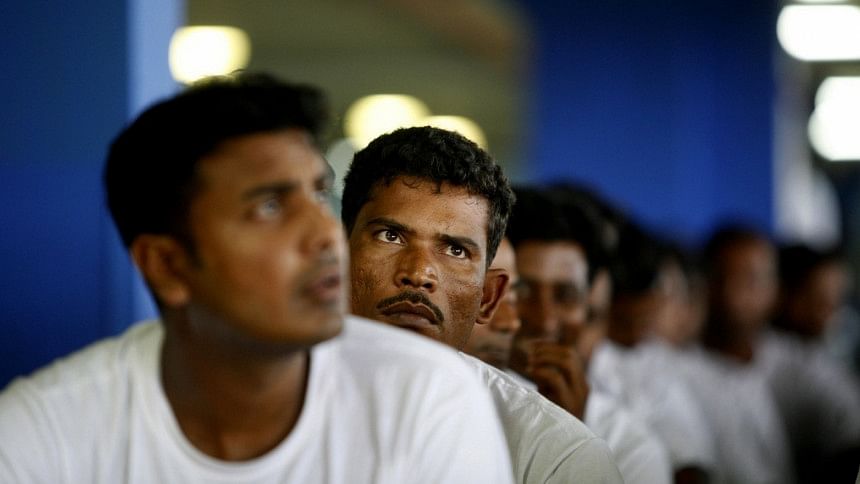99pc of potential migrants would stay in country if job opportunities were better: IOM report

If there were better job opportunities in Bangladesh, 99 percent of potential migrants would choose to remain in the country, says a new report of International Organization for Migration.
The report said the top drivers of migration from Bangladesh include absence of job opportunities (particularly in the formal sector), insufficient income, financial problems, a lack of social services and limited social protection system.
It said 38 percent respondents would stay if there were improvements to the rule of law, 36 percent would remain in the country if security situation were better, and 29 percent if health services were more accessible.
Almost half the respondents indicated they would remain in the country if they were supported to further their studies.
IOM Bangladesh, in coordination with the government, launched the report titled "Bangladesh: Survey on Drivers of Migration and Migrants' Profile" today during a ceremony held online.
A total of 11,415 potential migrants, who intended to migrate by June this year, from 64 districts were interviewed during a survey in November-December last year.
Potential migrants were categorised as "regular" or "irregular", based on whether they had registered with the government or not for their migration.
The report presented pre-Covid-19 dynamics and suggested comprehensive analysis of the migration drivers found in the survey together with profiles of potential migrants can provide a baseline to understand migration in the wake of the pandemic.
Most respondents were male (89 percent) and their average age was 27, with 64 percent aged in their twenties.
Approximately half the respondents were married. Most respondents were of working age and had attained some level of education.
In terms of the highest education level attained by respondents, 41 percent finished mid school, 27 percent completed secondary education, 26 percent completed primary education, and 3 percent didn't enrol for any education.
Forty percent of potential migrants were unemployed before deciding to migrate, and 90 percent reported no personal income or insufficient income.
The report said profiles of regular and irregular potential migrants are similar such as they are of the same age and have similar levels of education.
The survey found most Bangladeshi migrants intend to go to Middle East or elsewhere in Asia, with Saudi Arabia being the most popular destination. Only 1.4 percent expressed interest in migrating to Europe and the Americas.
The report showed 85 percent potential migrants paid migration facilitators including dalal (middlemen) to support their relocation.
Regular and irregular potential migrants paid very similar amounts. The average amount paid by regular potential migrants was Tk 2,43,651 (USD 2,871), while irregular potential migrants on average paid Tk 2,29,488 (USD 2,705).
The largest amount paid (to a migration facilitator) was Tk 1.6 million (USD 18,857).
Unveiling the report, Ahmed Munirus Saleheen, secretary of Expatriates' Welfare Ministry, said labour migration is immensely important for the economic and social development of Bangladesh.
He said the report provides a detailed understanding of the factors that shape international labour migration from Bangladesh.
It will help the government to formulate better policies and practices, he added.
IOM Chief of Mission in Bangladesh Giorgi Gigauri said this was the first time they have completed a nationwide survey of potential migrants.
"We anticipate that the findings from the report will initiate discussions on how to address the socioeconomic drivers of migration from Bangladesh and support high-level dialogue on the importance of investing in education and skills," he said.

 For all latest news, follow The Daily Star's Google News channel.
For all latest news, follow The Daily Star's Google News channel. 








Comments